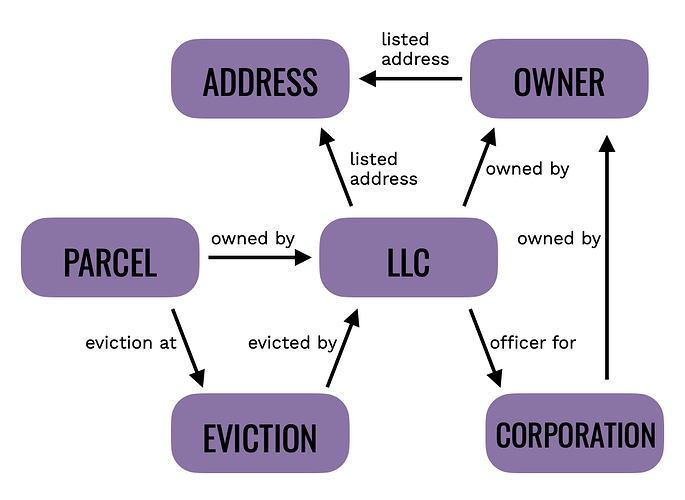Project Goal
Build a permanent accountability system that tracks housing issues across changing owners, managers, and tenants — creating evidence for organizing and ensuring issues do not fall through the cracks.
Why This Matters
Current Problem
We do not have an organized way to track tenant issues. Using a basic checklist or excel database would mean that when landlords sell or change managers, we would lose the ability to attribute complaint histories to the correct people.
Impact
While we may start solving issues in the short term, we would lose the ability to build on our work over time.
Solution
Create a database that preserves relationships over time.
What We’re (Trying to) Build
Core Database Design
- Track four key entities: Tenants, Properties, Owners, Managers
- Preserve historical relationships (who owned what, when)
- Link complaints to all relevant parties at time of occurrence
Temporal Tracking System
- Records survive property sales
- Complaints follow landlords to new properties
- Management company patterns visible across all clients
Audit Trail
- Every entry is traceable: who collected it, reported it, and when
- Document which solutions worked for specific problems
Key Capabilities
Allow Us to Find Patterns
- “80% of Landlord X’s properties have maintenance issues”
- “PM Company Y harasses tenants across multiple properties”
- “Building Z has pest problems regardless of owner”
Allow Us to Act Strategically
- Identify worst landlords/PMs for targeted campaigns
- Predict future problems based on ownership changes
- Connect tenants facing similar issues
Implementation
Integration Points
- Solidarity.Tech: Canvassing and communication tool with tenants. Can house survey data that are tenant related.
- Discourse forum: Treat issues like tickets that can be tracked.
- Assignment workflow: Ensure at least one WCU member is assigned an issue and responsible for keeping tenant(s) in the loop.
Data Flow
- New tenant → Link to building/landlord → Collect issues/problems
- Issue reported → Forum thread created → Assigned to WCU member
- Tenant associations can view/create threads for their buildings
Next Steps
Initial Next Steps
Technical Foundation
- Choose database technology
- Create a version control repository
- Document data model decisions
Core Schema Design
- Define minimum viable tables (WCU Membership, people, properties, units, issues)
- Implement temporal fields
- Design audit fields (created by, modified by/at)
Initial Data Mapping
- Export data from county
- (Maybe) Incorporate data from PropertyRadar
- Export data from solidarity.tech
- Identify how data has to be cleaned up, mapped to fields, and use n8n to automate the data migration
MVP Baseline
- Figure out what MVP development baseline level is

